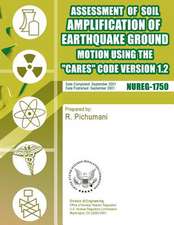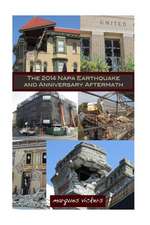How Life Increases Biodiversity: An Autocatalytic Hypothesis
Autor David Seaborgen Limba Engleză Paperback – 25 sep 2023
Key Features
• Describes a hypothesis that life itself generates higher biodiversity
• Suggests a highly modified version of the established paradigm in population biology and evolution
• Asserts that all species are ecosystem engineers with a net positive effect on biodiversity and their ecosystems
• Suggests that mutualism and commensalism are the rule
• Presents a novel view likely to elicit deeper discussions of biodiversity
Related Titles
Dewdney, A. K. Stochastic Communities: A Mathematical Theory of Biodiversity (ISBN
978-1-138-19702-2)
Curry, G. B. and C. J. Humphries, eds. Biodiversity Databases: Techniques, Politics, and
Applications (ISBN 978-0-367-38916-1)
Pullaiah, T, ed. Global Biodiversity. 4 Volume Set (ISBN 978-1-77188-751-9)
| Toate formatele și edițiile | Preț | Express |
|---|---|---|
| Paperback (1) | 439.03 lei 6-8 săpt. | |
| CRC Press – 25 sep 2023 | 439.03 lei 6-8 săpt. | |
| Hardback (1) | 1244.76 lei 6-8 săpt. | |
| CRC Press – 10 sep 2021 | 1244.76 lei 6-8 săpt. |
Preț: 439.03 lei
Preț vechi: 477.20 lei
-8% Nou
Puncte Express: 659
Preț estimativ în valută:
84.01€ • 86.80$ • 69.89£
84.01€ • 86.80$ • 69.89£
Carte tipărită la comandă
Livrare economică 19 martie-02 aprilie
Preluare comenzi: 021 569.72.76
Specificații
ISBN-13: 9780367631345
ISBN-10: 0367631342
Pagini: 264
Ilustrații: 6 Illustrations, color
Dimensiuni: 156 x 234 x 16 mm
Greutate: 0.45 kg
Ediția:1
Editura: CRC Press
Colecția CRC Press
ISBN-10: 0367631342
Pagini: 264
Ilustrații: 6 Illustrations, color
Dimensiuni: 156 x 234 x 16 mm
Greutate: 0.45 kg
Ediția:1
Editura: CRC Press
Colecția CRC Press
Public țintă
Academic and Professional ReferenceCuprins
1. Introduction: Overview and Summary of the Life Generates Biodiversity Theory. 2. Life is Spectacularly Diverse. 3. Life Regulates Greenhouse Gas Levels and Global Temperature, while Conserving Carbon. 4. Life Created the Atmosphere’s Oxygen. 5. Life Built the Soil into an Ideal Ecosystem for Life. 6. Plants Profoundly Altered the Landscape, Favoring Biology. 7. Mutualism between Species Structures Ecosystems and Caused the Evolution of High Biodiversity. 8. Commensalism Maintains High Biodiversity. 9. Predation and Parasitism Greatly Increase the Number of Species. 10. Seemingly Paradoxically, Even Competition Tends to Increase or at least Maintain Biodiversity. 11. The Microbiome and the Hologenome Theory of Evolution. 12. Viruses Create High Biodiversity. 13. Ecosystems Interact, and Help Each Other, like Mutualistic Species. 14. Life Drove the Great Increase in Biodiversity Seen in the History of Life. 15. Altruism and Co-operation are Darwinian, Common, and Adaptive, and Maintain Biodiversity. 16. Horizontal Gene Transfer Causes Macroevolutionary Leaps. 17. The Origin of Life on Earth was Highly Probable, and Systems Tend to Increase in Complexity. 18. The Earth and Solar System Act as a System to Favor Life. 19. Possible Unifying Mechanisms for Life Generates Biodiversity Theory. 20. Environmental and Other Implications of the Life Generates Biodiversity Theory.
Notă biografică
David Seaborg is an evolutionary biologist and Director of Research for the Foundation for Biological Conservation and Research, an evolutionary biology research foundation located in Walnut Creek, California. His undergraduate degree is from the University of California at Davis in zoology, and his graduate degree is from the University of California at Berkeley, also in zoology. He founded and is President of the World Rainforest Fund, a nonprofit foundation dedicated to saving the earth’s tropical rainforests and biodiversity. He also founded and headed the Seaborg Open Space Fund, named in honor of his father, to raise money and awareness to save open space from development in central Contra Costa County.
Recenzii
"This science book presents an intriguing theory that all species make their environment better for life. Under natural conditions, organisms work to increase biodiversity and create conditions that improve the habitat for themselves and for other species. For instance, organisms build up the soil, oxygenate the atmosphere, and make the climate favorable to life. This textbook also contains thought-provoking explanations about biological processes, such as plants and fungi emitting (and responding to) chemical signals in order to help other members of their species adapt to their environment. The volume contains engaging discussions about symbiotic relationships such as mutualism and commensialsim. The author asserts that cooperation between species is far more prevalent that supposed in the past, when biological discussions emphasized inter-specific competition. I recommend this fascinating book, which is written in a style intelligible to the layman while also having a depth informative to the specialist."
- Reid Stuart, Assistant Manager for the International Institute for the Bengal and Himalayan Basin, April 2024
- Reid Stuart, Assistant Manager for the International Institute for the Bengal and Himalayan Basin, April 2024
Descriere
Life maximizes biodiversity; this is the hypothesis of this book. An atmosphere favorable for life, including high oxygen and the ozone layer, and favorable nitrogen and carbon dioxide levels stimulated increases in biodiversity. This observations and others suggest that life has created a positive feedback loop stimulating biodiversity.




















